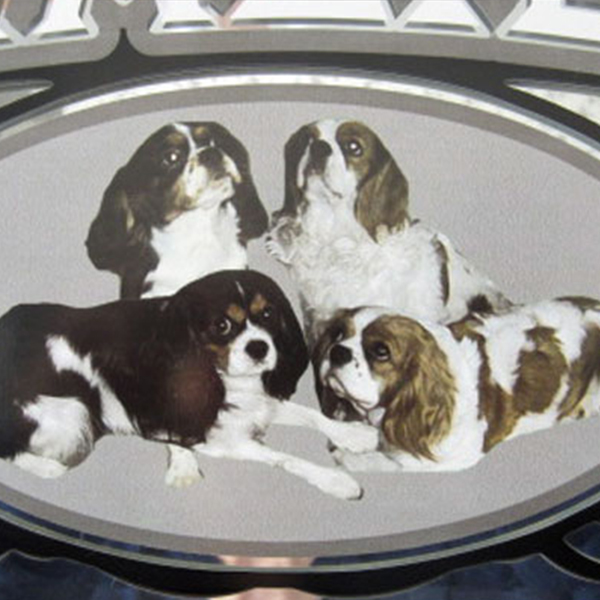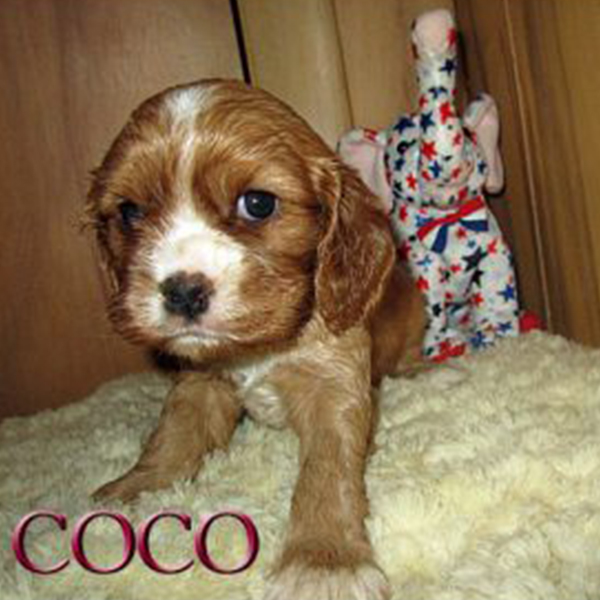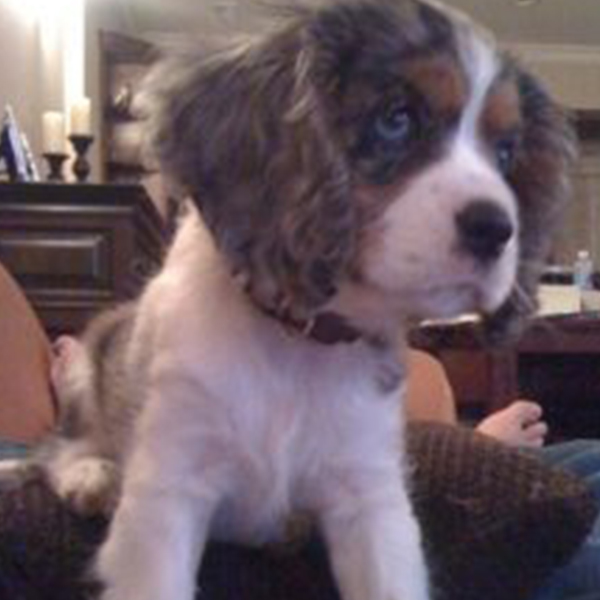
The Cockalier is a hybrid or designer breed that is a mix between the Cavalier King Charles Spaniel and the Cocker Spaniel. There are many different possible markings and colors that may come through both the Cavalier as well as the Cocker Spaniel lines. For the most part, the Cockalier will tend to take on more of one of their parent’s shape than a combination of both. As a result, some Cockaliers tend to be somewhat short and have bodies that are stocky; similar to that of the Cocker Spaniel. There are also other Cockaliers that will have a body shape that is more similar to that of the Cavalier. The actual size of the dog will also depend upon the weight of the parents. The coat of the Cockalier will also depend upon which parent the dog takes after as well.
The coat of the Cockalier will generally vary depending on whether the dog takes after the Cocker Spaniel or the Cavalier. There are some dogs in this breed that will have a coat that is curlier and more similar to that of the Cocker Spaniel while others will have a coat that is finer and more like the Cavalier. Dogs that have taken more after the Cavalier line will need to have more attention paid toward their ears. This is because the fine hair on this type of coat can easily become snarled. Also, it should be noted that the Cockalier with a Cavalier coat will have a moderate shedding. While this breed does house train easily, owners should be aware that because it is a small breed, the Cockalier tends to have a small bladder and will need to be walked or taken out more often than a larger breed dog in order to prevent accidents. Maintenance will depend upon which parentage the dog takes after.
The Cockalier breed is known for being easy-going and having a disposition that is sweet. They are also well known for being easily trained. For the most part, they get along well with children and make good family pets. They also get along well with other animals in the home as well. Their intelligence allows them to be quick learners and they typically have a strong desire to please their owners. This is a very loyal dog that does not usually display any signs of aggression. The smaller breed dogs should be supervised when playing with young children because they may be easily injured by energetic play. These dogs do love to play and should be provided with ample opportunity to play, especially with balls and ropes which they can tug on. The best environment for the Cockalier is one in which they will have plenty of space in which to run and play. While this breed can do well in an apartment, the owner will need to make sure that they provide plenty of opportunities for playing and exercising. When taking the Cockalier out for walks, it is important to realize that some dogs in this breed enjoy hunting small game so they are known to give chase when they encounter small game such as squirrels and rabbits.
One exception was the strain of red and white Toy Spaniels that was bred at Blenheim Palace by various Dukes of Marlborough. In the early days, there were no dog shows and no recognized breed standard, so both type and size varied. With little transport available, one can readily believe that breeding was carried out in a most haphazard way. By the mid-nineteenth century, England took up dog breeding and dog showing seriously. Many breeds were developed and others altered. This brought a new fashion to the Toy Spaniel – dogs with the completely flat face, undershot jaw, domed skull with long, low set ears and large, round frontal eyes of the modern King Charles Spaniel (also called “Charlies” and known in the United States today as the English Toy Spaniel). As a result of this new fashion, the King Charles Spaniel of the type seen in the early paintings became almost extinct.
It was at this stage that an American, Roswell Eldridge, began to search in England for foundation stock for Toy Spaniels that resembled those in the old paintings, including Sir Edwin Landseer’s “The Cavalier’s Pets.” All he could find were the short-faced Charlies. Eldridge persisted, persuading the Kennel Club in 1926 to allow him to offer prizes for five years at Crufts Dog Show – twenty-five pounds sterling for the best dog and twenty-five pounds sterling for the best dog and best bitch of the Blenheim variety as seen in King Charles II’s reign. The following is a quotation taken from Crufts’ catalog: “As shown in the pictures of King Charles II’s time, long face no stop, flat skull, not inclined to be domed and with the spot in the center of the skull” and the prizes to go to the nearest to the type described.
No one among the King Charles breeders took this challenge very seriously as they had worked hard for years to do away with the long nose. Gradually, as the big prizes came to an end, only people really interested in reviving the dogs as they once had been were left to carry on the breeding experiment. At the end of five years little had been achieved, and the Kennel Club was of the opinion that the dogs were not in sufficient numbers, nor of a single type, to merit a breed registration separate from the Charlies.
This is a dog that does well with training and when trained early will learn to respond to commands easily. The photographs on this page are of past Cockaliers. If you are interested in one of our Cockaliers please either fill in an application



